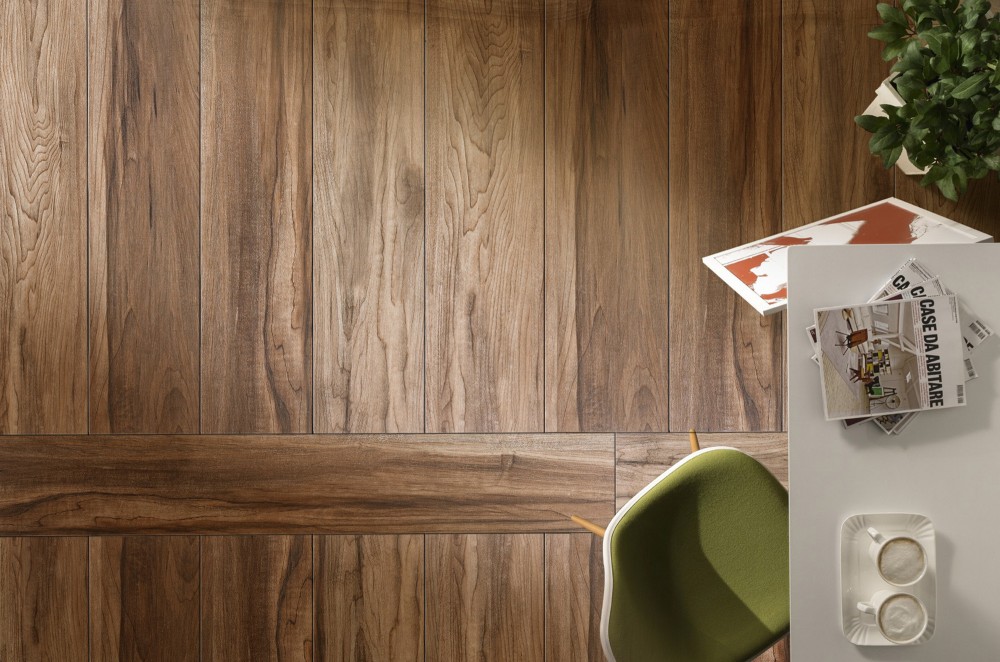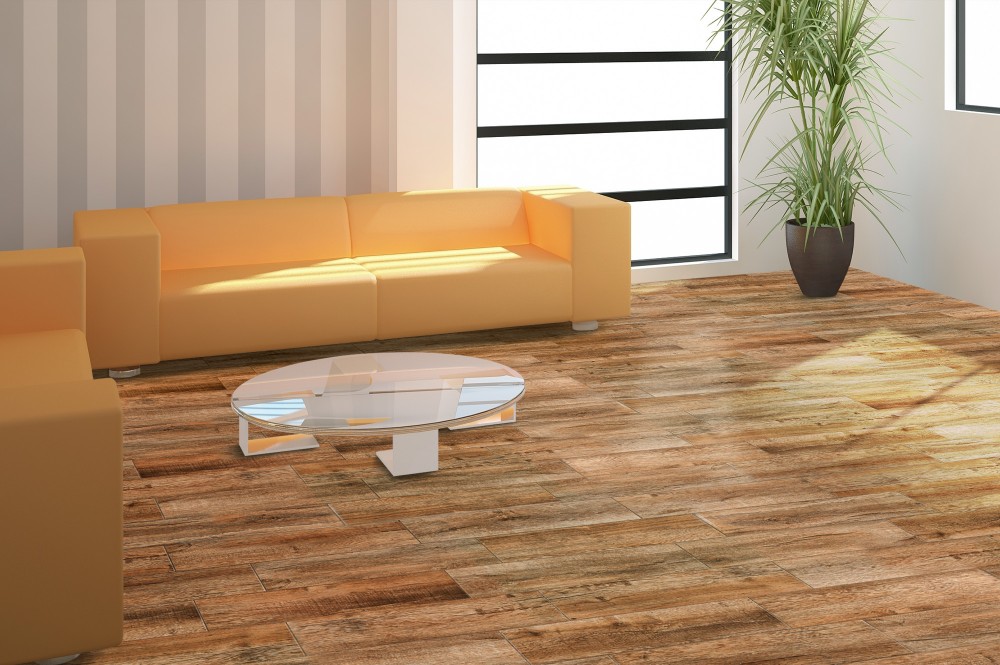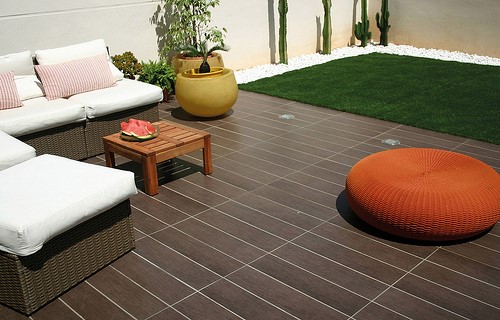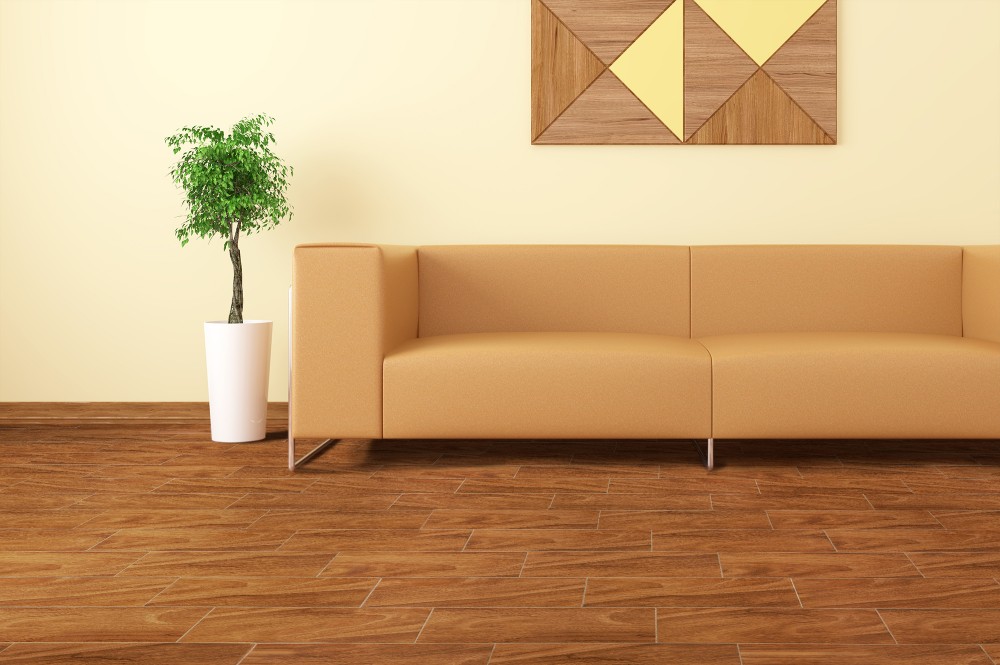Tile That Looks Like Wood
Wood provides a classic rustic look for any part of your home. One look at the aged material conjures memories of the outdoors and vintage cabins in idyllic settings. The problem is that wood isn’t a viable option in some parts of your home. Spaces that are susceptible to moisture or humidity like a bathroom or kitchen could potentially deteriorate wood flooring. No matter how quickly you eliminate the moisture, it’ll do significant long-term damage. A better solution, then, is flooring that looks like wood but is in fact made from a different substance like tile. Let’s explore some of the benefits of wood-like tile flooring.
The Basics
Very little in the flooring industry is new. Instead, millions of people have all experienced the same problems that you’re facing now. Over time, clever manufacturers deduced that wood’s popularity provided a business opportunity. They could craft a similar appearance from a more reliable material that could easily sustain moisture and humidity.
Over time, ceramic, porcelain, and natural stone tiles all became popular wood substitutions. The genius of the tile alternatives to wood is that manufacturers can build them to have a similar appearance to wood. Most people can’t tell the difference from afar. In some instances, a person can even stand on tile that looks like wood without realizing it. That means a homeowner can enjoy all the benefits of the rustic look of wood without the negatives. You won’t have to replace your flooring if your home suffers from flooding or other forms of water damage.
The Options
There are three primary tile alternatives to wood. Ceramic tile is extremely inexpensive. It costs $1,588 on average and rarely exceeds $4,245 to cover your entire floor. Not only is that barely half of wood’s cost, it’s not even $100 more than the price of wall-to-wall carpeting. For the same cost of the least expensive type of floor covering, you can add something to your home that will offer a rustic tone and a seemingly expensive finish.
Porcelain tile often gets lumped in with ceramic tile, but there are some differences. Most importantly, porcelain is a purer form of the ceramic type. Its water absorption rate of 0.5 percent allows for a different kiln process. The manufacturer can fire it at a higher temperature. If the tile sets without losing purity, it now qualifies as porcelain. That means it’s a better product that retailers can sell at a higher price. While pricing generic ceramic tile, also check the upgrade cost to porcelain. If you can afford the extra money, it’s a worthy investment.
Natural stone tile, also known as travertine tile, is another wonderful substitute for wood laminate. The most important positive is its cost. You should expect to pay $1,825 on average for this flooring, $5,000 at the most. What you’ll get for the economical price is a remarkably robust and attractive appearance for your home. Travertine tile is a natural type of material that forms when it rests in riverbeds for extended periods.
While travertine tile and porcelain cost roughly the same, you’ll want to look at each one to find your favorite. Many consider travertine a luxury type of flooring, which makes its competitive price compared to carpet all the more surprising. Porcelain is similarly high-end, but since few can distinguish the difference between basic ceramic tiles and the purer porcelain ones, you may not care to splurge.
The Pros and Cons
Each of the three wood substitutes has advantages and disadvantages. Travertine tile isn’t uniform and it can be fairly porous. It’s not the best solution for a room like the kitchen, where you’re likely to have spills and drops. Any type of liquid or acid can cause permanent damage to the tile if left unattended. Similarly, travertine tile isn’t a great option for pet owners. You can’t control accidents, and those are potentially just as harmful as spilling your drink on the tile.
The option exists to seal your travertine tile in order to prevent lasting harm. This solution is more expensive, and it’s imperfect, too. Even if you seal the tile to stop its porousness, it still is prone to stains. So, spills will cause the wood-like tile to appear less attractive as well as more obviously fake.
Travertine tile is best for rooms where you’ll have light foot traffic but want a gorgeous aesthetic. The master bathroom is a perfect choice. It’s also the best option when the time comes to replace your tiles. You’ll have no problem finding new stone tiles similar to your current ones. It’s also easily the most environmentally friendly choice, since it’s naturally made.
Ceramic tile and porcelain tile have the same pros and cons. They’re both wonderful in rooms where stains are a concern. The materials used are basically impervious to spills, whether they come from liquids or acids. If your pet has an accident, all you need is a mop. There will be no signs of the incident later, since ceramic tile doesn’t stain. Their manufactured protective cover is effectively a permanent shield against clumsiness.
For this reason, ceramic tile is the optimal choice for the kitchen. The only caveat is that if you purchase unglazed ceramic tile, it’ll need sealing before you have such security. Even if you don’t do that, it’s still the best tile for areas that receive heavy foot traffic, like the living room and den.
The primary con of ceramic tile is that you might chip it. This doesn’t happen easily, since the tile is sturdy, but it’s a definite possibility. Also, since it is such a substantial material, anything breakable that you drop on this surface will probably shatter. There’s not a lot of give in ceramic tile.
The lingering concern with all tile flooring as opposed to wood materials is that it’ll feel colder during the winter. Wood captures and holds warm air, which is welcome during colder months, especially if you live in a chilly climate. The advantage of the various wood-like tiles is that they’ll keep you cooler in the summer since they’re colder to the touch. So, it’s a trade-off of whether you’d rather be warmer in the winter or cooler during the dog days of summer.
Choosing the flooring for your home is a huge decision. You’ll look at the results every day for the next several years. You should carefully weigh your options using the above guide as a handy resource. While wood laminate is a fine option, you’ll likely enjoy the more robust nature of the various tile options. Best of all, they’re universally cheaper.
Was this article helpful to you? Let us know in the comments section below.





Sandy Gardner
Good information. Thank you